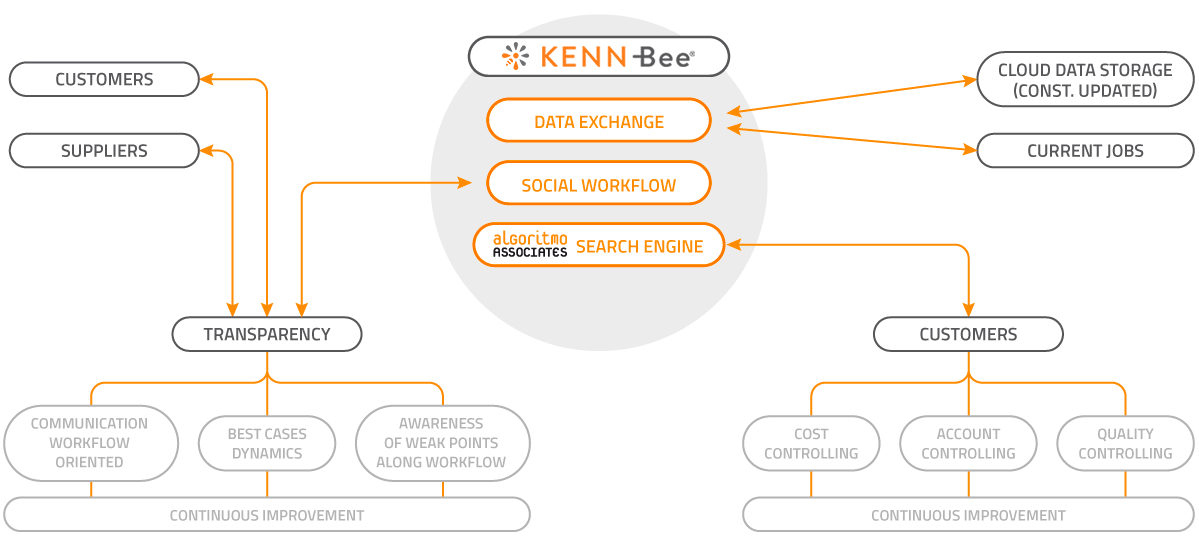We initially started working with AlgoTool, an application developed by Algoritmo srl. It made it possible to manage documentary processes and at the same time identify projects and adequate resources, handle administration and process data for the purposes of cost analysis.
In 2002, the need arose for a tool that would make it possible to simplify workflow while also ensuring compliance with quality control regulations. It was at this point that the idea came about of using commodity codes as a tool for classifying projects and resources, but also for managing quality. Thanks to AlgoTool, project managers could analyse projects before starting, select the best resources and also follow the progress being made.
We used AlgoTool for many years and it allowed us to achieve excellent performance levels. Nevertheless, over the years, project complexity increased and the importance of workflow grew. At the same time, new tools for communicating and sharing were emerging, galvanising us to conceive of our own new tool – one that would overcome workflow difficulties.
Before the birth of KENN-Bee® we focussed heavily on the difficulties in the documentary process, which were:
- how to coordinate a high number of participants, from translators to layout designers, with countless functional overlaps;
- how to manage information flow along the entire process;
- how to manage cognitive flows with high levels of knowledge and know-how dispersion.
As a consequence, and also after analysing the tools available on the market, we realised that, aside from the features of the individual applications, the greatest difficulty was integrating the product used with the operating context. As a result, we developed a new platform on which the workflow could be managed transparently and could be viewed by all participants. The open communications context makes it possible to reduce the dispersion of knowledge and increase awareness of working contexts. Processing and transferring knowledge is complex, but the new platform made it possible to simplify these processes and integrate the existing systems that were already in use. The goal was to create a universal, intuitive and simple environment in which to gather and use information: KENN Bee® was born.
